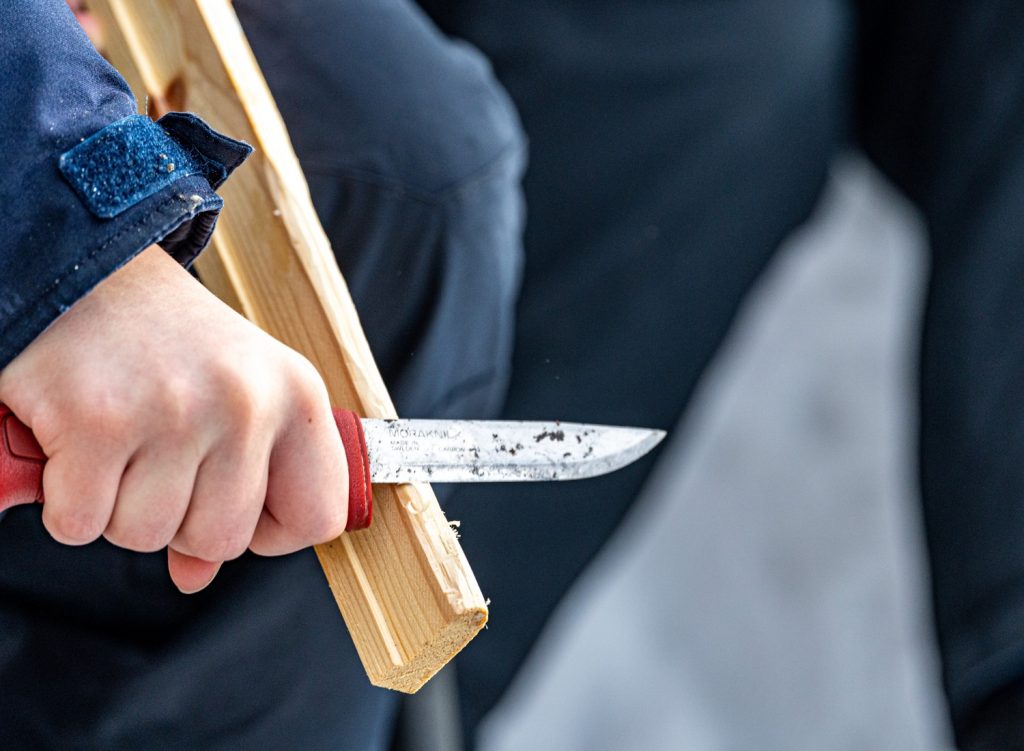3 Types of Knives Every Woodworker Should Own

Woodworking is a craft that requires precision and attention to detail. The tools you use can greatly impact the quality of your artistry, and one essential tool that every woodworker should have in their arsenal is a knife. Knives play a vital role in woodworking, serving various functions and contributing to the overall outcome of your projects.
In this article, we’re exploring the pivotal uses knives have in woodworking and highlighting three reliable options for you to consider. Whether you’re a seasoned pro or just starting, these three types of knives will revolutionize your woodworking projects and take your craftsmanship to the next level.
The Importance of Knives in Woodworking
Knives are used for a wide range of tasks in woodworking, such as shaping and carving wood, creating intricate designs, and even cutting materials like leather or fabric. They allow you to achieve clean and precise cuts, giving your projects a professional finish. Additionally, knives are versatile tools that can be used for rough shaping and delicate detailing, making them indispensable in woodworking.
The quality of your knives can significantly impact the quality of your workmanship. A well-made and properly maintained knife will provide better control and accuracy, resulting in cleaner cuts and smoother finishes. On the other hand, using a dull or low-quality knife can lead to rough edges, jagged cuts, and poor craftsmanship. Therefore, investing in high-quality knives is crucial for achieving professional-level woodworking results.
What to Consider When Choosing Woodworking Knives
When choosing woodworking knives, you must consider several factors to select the right tools for your projects. These factors include material quality, knife design, sharpness and retention, comfort, and safety.
Material quality is an important aspect to consider when choosing woodworking knives. A knife is considered high-quality if made from durable materials such as high-carbon or stainless steel. These materials offer excellent edge retention and are less prone to rust or corrosion, ensuring your knives last longer and maintain their sharpness over time.
Knife design is another crucial factor to consider. Different knife designs are suited for specific woodworking tasks. For example, a straight-edged knife is ideal for general cutting and shaping, while a curved-blade knife is better for intricate carving and detail work. Choosing knives with designs that align with the types of projects you typically undertake is important.
Sharpness and retention are key characteristics to look for in woodworking knives. A sharp knife is essential for achieving precise cuts, while good edge retention ensures that the knife stays sharp for longer periods, reducing the need for frequent sharpening. Consider knives with a reputation for sharpness and long-lasting edges to enhance your woodworking experience.
You shouldn’t overlook comfort and safety when selecting woodworking knives. Knives with ergonomic handles provide better grip and reduce strain on your hands during prolonged use. Additionally, knives with safety features such as finger guards or locking mechanisms can help prevent accidents and injuries, making them essential for your woodworking toolkit.
Types of Woodworking Knives
Fixed Blade Knife
As the name suggests, the fixed-blade knife features a blade permanently attached to the handle, providing strength and stability. Unlike folding knives, there are no joints or mechanisms, making them exceptionally durable.
Uses in woodworking:
- Detail work: The sharp, pointed tip can be used for detailed carving tasks, allowing woodworkers to achieve intricate designs.
- Roughing tasks: Due to its sturdiness, it’s ideal for stripping bark or making preliminary cuts before refining a piece.
Marking Knife
A marking knife has a sharp, pointed blade designed specifically for marking out your cuts on wood. It offers far more precision than pencils or pens.
Uses in Woodworking:
- Accurate lines: Ideal for marking exact lines where cuts need to be made, especially for joinery.
- Clean cuts: When used right, it can help reduce tear-out by pre-cutting the top layer of wood fibers before sawing.
Whittling Knife
This knife is perfectly crafted for whittling—carving shapes out of raw wood and designed for comfort during prolonged use.
Uses in woodworking:
- Carving: From crafting intricate designs to making small wooden figures, a whittling knife is a go-to tool.
- Refining shapes: Perfect for rounding edges, adding detail, or creating textures in a woodworking project.
Conclusion
Knives are invaluable tools for woodworkers. With the right knives and techniques, you can elevate your woodworking projects and achieve professional-level results. By incorporating expert tips and tricks, such as advanced knife skills and combining different knife types, you can take your woodworking to the next level. Seeking advice and insights from professional woodworkers can also provide valuable knowledge and guidance. It’s time to explore the uses of knives and unleash your creativity in the workshop!
